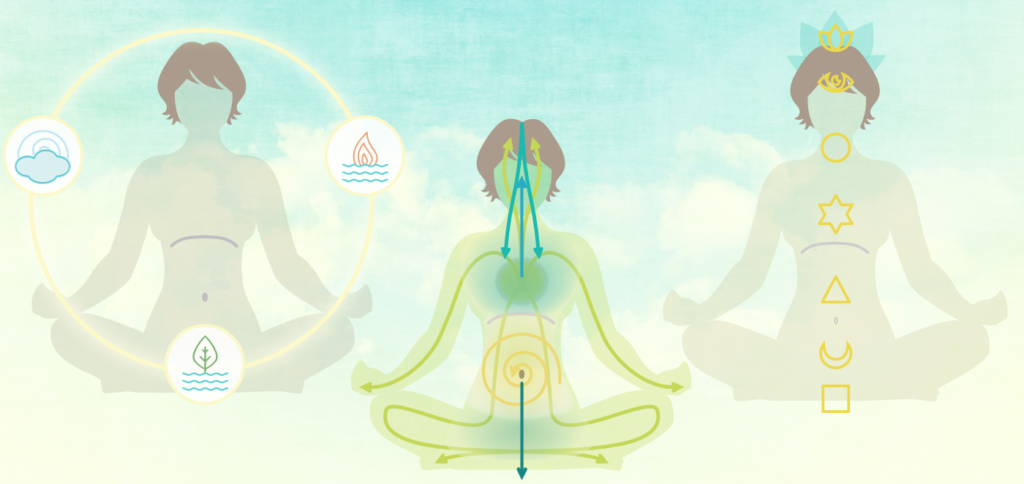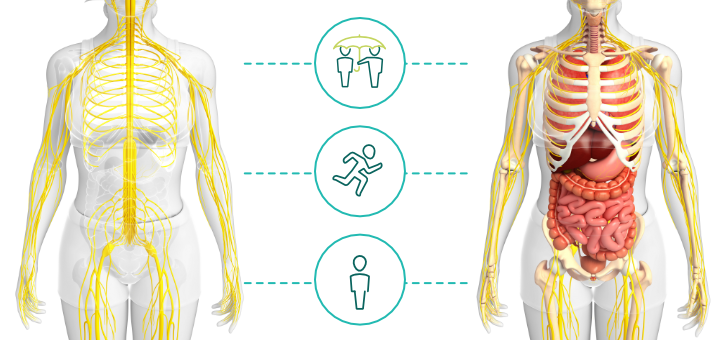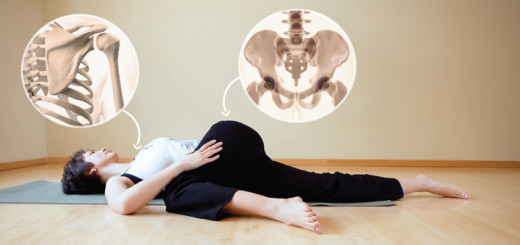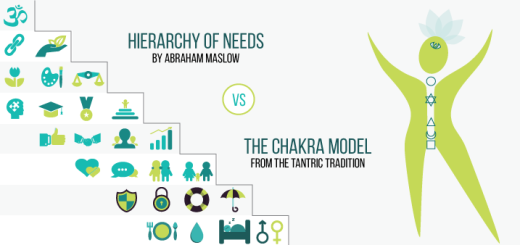Three main yogic frameworks for understanding your state of well-being
0A great big thank you to all of you who completed our Reader Survey! It gives me a glimpse into what you are thinking and what you are dealing with right now, which is so, so helpful when I make my publishing choices. I am profoundly grateful for all the kind words and wonderful feedback I got, thank you so much! I feel so lucky to be in the company of such wonderful people who truly care about yoga.

Congratulations to our raffle winners Sandra Wood, Gerd Borchgrevink and Meera Mehta! We are happy to offer each one of you a yoga series of your choice. We will be in touch with you directly to go over the details.
Let’s continue with our journey of self-exploration!
Whenever we try to understand what’s going on inside ourselves or our students, we can use different frameworks (or models) to try and make sense of what we observe. When we try to understand what’s going on the level of physical structure, we use the structural model and analyze the relationships between the bones, muscles, joints, and fascia. When we try to understand what’s happening with our physiology, we might use the framework of organ systems (circulatory, respiratory, digestive, and so on) or even individual organs (heart, lungs, stomach, etc.) and base our analysis on what we’ve learned in our physiology class.
However, if we zoom in too much on one muscle group or a problem within a specific organ system, it can be hard to see the big picture of how it fits within the context of the entire organism. That is why in yoga therapy we often use an additional set of frameworks (or models) to see how a specific health concern fits with the students’ overall constitutional, energetic, and psychological state. We step back and take a bird’s eye view of the student’s constitution (the Ayurvedic model), the movement of nourishment throughout the system (the Pancha Vayu model), and the states of excess and deficiency within each of the body’s main energetic centers (the Chakra model). These models are invaluable for assessing the student’s system-wide state of health and well-being and for choosing specific strategies we can employ to facilitate healing.
Generally speaking, a model is a simplified representation of some realities that exist in the physical world; it is a mental construct put together to promote better understanding of the world around us and our internal state. Each model usually has its own main concepts that are organized in a particular way and are used to understand certain parts of the reality. In yoga therapy, the reality that we are trying to understand is the totality of the human body, including its physical structure, physiology, psychology, and spirituality. We are also trying to explain how the six major factors—diet, environment, lifestyle, movement, breathing, and mental activities—can be used to restore balance and promote health and well-being.

Below is a brief overview of the three main models that are most commonly used in yoga therapy: the Ayurvedic model, the Pancha Vayu model, and the Chakra model.
- The Ayurvedic model uses the concepts of qualities (dryness, lightness, heat, density, etc.) and their associated functions (mobility, metabolic activity, stability, etc.) to maintain and restore the individual’s health. According to the Ayurvedic model, those qualities and functions are represented within everyone in certain quantities and are part of our constitutional makeup. However, if those qualities become significantly increased or decreased, it creates an imbalance and leads to health issues. Knowing your constitutional predispositions toward specific imbalances helps you avoid things that might aggravate the imbalance and correct the imbalance once it manifests.
- The Pancha Vayu model uses the concept of vayus (winds, or energetic currents) to describe the movement of nourishment throughout the body. It recognizes that for the body to be alive and healthy you need to take in nourishment (as food, water, air, or experiences), process it somehow, distribute and absorb the nutrients, eliminate waste, and, as a result, heal, grow, and evolve. Vayus are the currents of energy that guide each one of those processes. Vayus are located in particular parts of the body and move in certain directions. When you experience any physiological issue, it is a manifestation of one or move vayus not moving properly. Knowing the direction(s) of impeded energy movement helps you choose appropriate practices to restore balanced energy flow.
- The Chakra model uses the concept of chakras, the body’s main energetic centers, to understand how our experiences, cultural conditioning, habits, and past physical and emotional injuries influence our deeply held beliefs about ourselves and our place in the world as well as our functioning in daily life. Chakras are said to be energy concentrations that are located throughout the body at the intersection of the three major energetic channels (ida, pingala, and sushumna nadis). Chakras store information about specific aspects of our personality and can be in a state of balance, excess, or deficiency. Mapping the state of our chakras and doing chakra-related practices can help us meet our basic needs, unearth our deepest beliefs, and evolve our personalities.
The choice of an appropriate model will depend on the type of manifested imbalance. Not all models will be appropriate or necessary for all students. All of these models are non-invasive and substance-free; they take into account the whole body. They can be used in conjunction with traditional medical treatments and usually have no side effects.
To employ these models effectively, you need to have a deep understanding of each model and its appropriate application in different situations. There are many traditional yogic texts that explain these models. If you are just starting out or want to understand these models through a more contemporary lens, I would recommend the following selection of books:
- The Ayurvedic model: The Chemistry of Joy: A Three-Step Program for Overcoming Depression Through Western Science and Eastern Wisdom by Henry Emmons, MD (affiliate link),
- The Ayurvedic model and the Pancha Vayu model: Yoga and Ayurveda: Self-Healing and Self-Realization by David Frawley (affiliate link),
- The Chakra model: Eastern Body, Western Mind: Psychology and the Chakra System as a Path to the Self by Anodea Judith (affiliate link).
Next time we will take a closer look at how these concepts could be used in student assessment – tune in!
[jetpack_subscription_form]



















